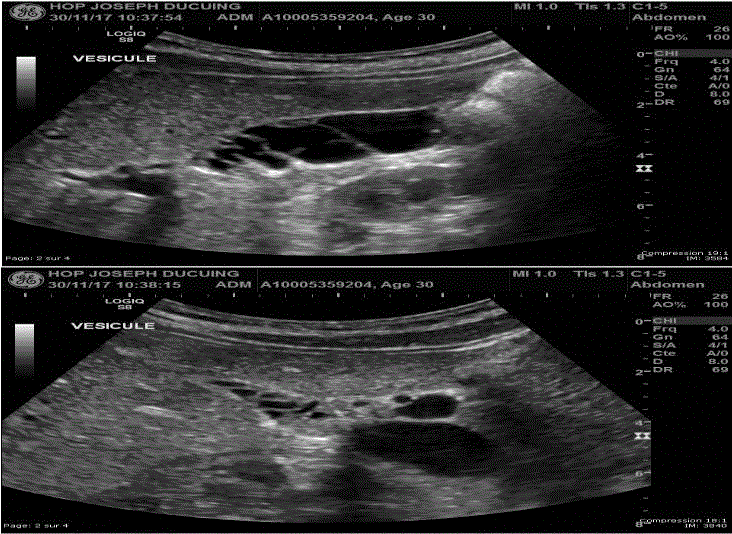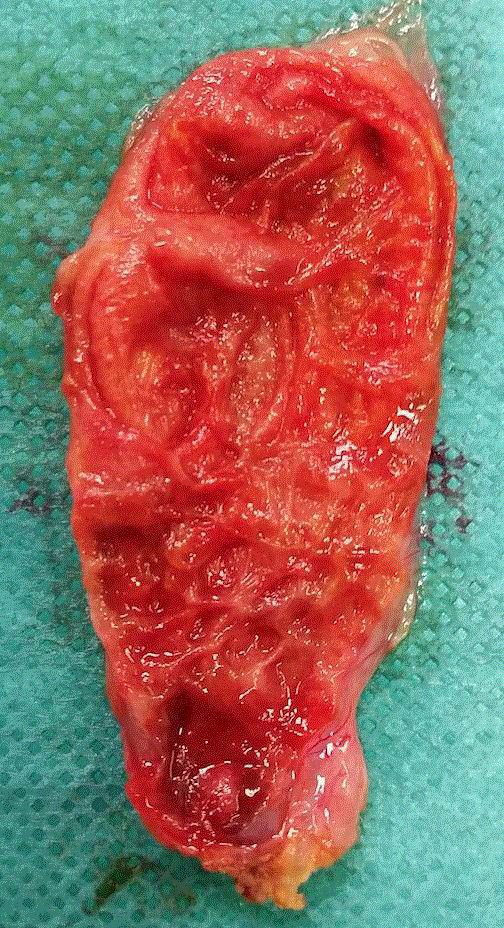Case Report
A Symptomatic Multiseptate Gallbladder without Gallstones
Damien Dousse1*, Laura Marcu2 and Francesco Martini1
1Digestive Surgery Service, Hospital Joseph Ducuing, Toulouse
2Department of Radiology, Hospital Joseph Ducuing, Toulouse
*Corresponding author: Damien Dousse, Service de chirurgie digestive, CHU Rangueil, 1, avenue du Professeur-Jean-Poulhès, 31400 Toulouse, France
Published: 02 Apr, 2018
Cite this article as: Dousse D, Marcu L, Martini F. A
Symptomatic Multiseptate Gallbladder
without Gallstones. Clin Oncol. 2018;
3: 1452.
Abstract
Multiseptate Gallbladder is a rare congenital abnormality, which can be totally asymptomatic or responsible for biliary pain in the absence of cholelithiasis or cholecystitis. In case of persistent symptomatology, cholecystectomy represents the treatment of choice. Keywords: Multiseptate gallbladder; Cholecystectomy; Biliary Colic
Case Presentation
A 30-year-old woman with no significant history, presented with recurrent pain in the right hypochondrium after rich meals since several years. The blood tests showed no abnormality, with normal inflammation markers and normal hepatic tests. Abdominal ultrasonography (Figure 1) found a Multiseptate Gallbladder (MSG) showing multiple transverse and non-vascularized septa, in the absence of dilatation or parietal thickening; no gallstone was found. The patient underwent laparoscopic cholecystectomy. Intraoperative cholangiography showed no abnormality. The pathological assessment confirmed the diagnosis of MSG (Figure 2). At the last control, three months after surgery, the patient was asymptomatic.
Discussion
MSG is a rare congenital abnormality, most commonly found in children [1], in which the gallbladder is divided into several compartments of different sizes by intraluminal septa. Compartments are in communication with each other. Septa, covered by a typical cylindrical epithelium, can be partial or complete [2]. MSG may be asymptomatic, or may cause recurrent pain in the right upper abdominal quadrant, without abnormality of blood tests and without complications (sludge, gallstones, or cholecystitis) [1-3]. The literature concerning this rare condition is scanty with just a few case reports. Since regression of symptoms has been reported after cholecystectomy, surgical treatment is likely to be justified in case of persistent symptomatology [1-3].
Figure 1
Figure 2
References
- Wanaguru D, Jiwane A, Day AS, Adams S. Multiseptate Gallbladder in an Asymptomatic Child. Case Rep Gastrointest Med. 2011;2011:470658.
- Geremia P, Tomà P, Martinoli C, Camerini G, Derhi LE. Multiseptate gallbladder: Clinical and ultrasonographic follow-up for 12 years. J Pediatr Sur. 2013; 48(2),25-8.
- Karaca T, Yoldas O, Bilgin BC, Bilgin S, Evcik E, Ozen S. Diagnosis and treatment of multiseptate gallbladder with recurrent abdominal pain. Case Rep Med. 2011;2011:162853.


